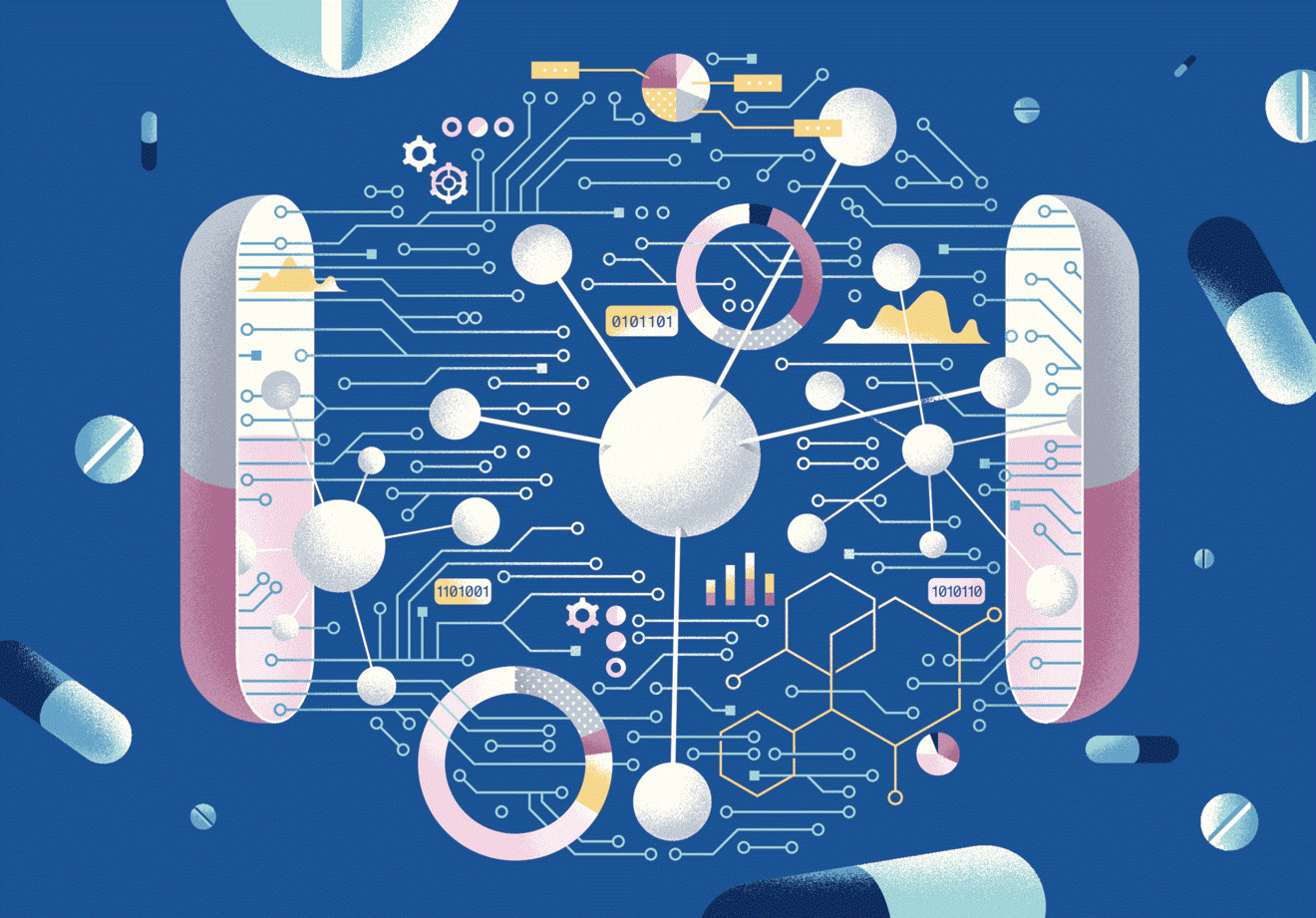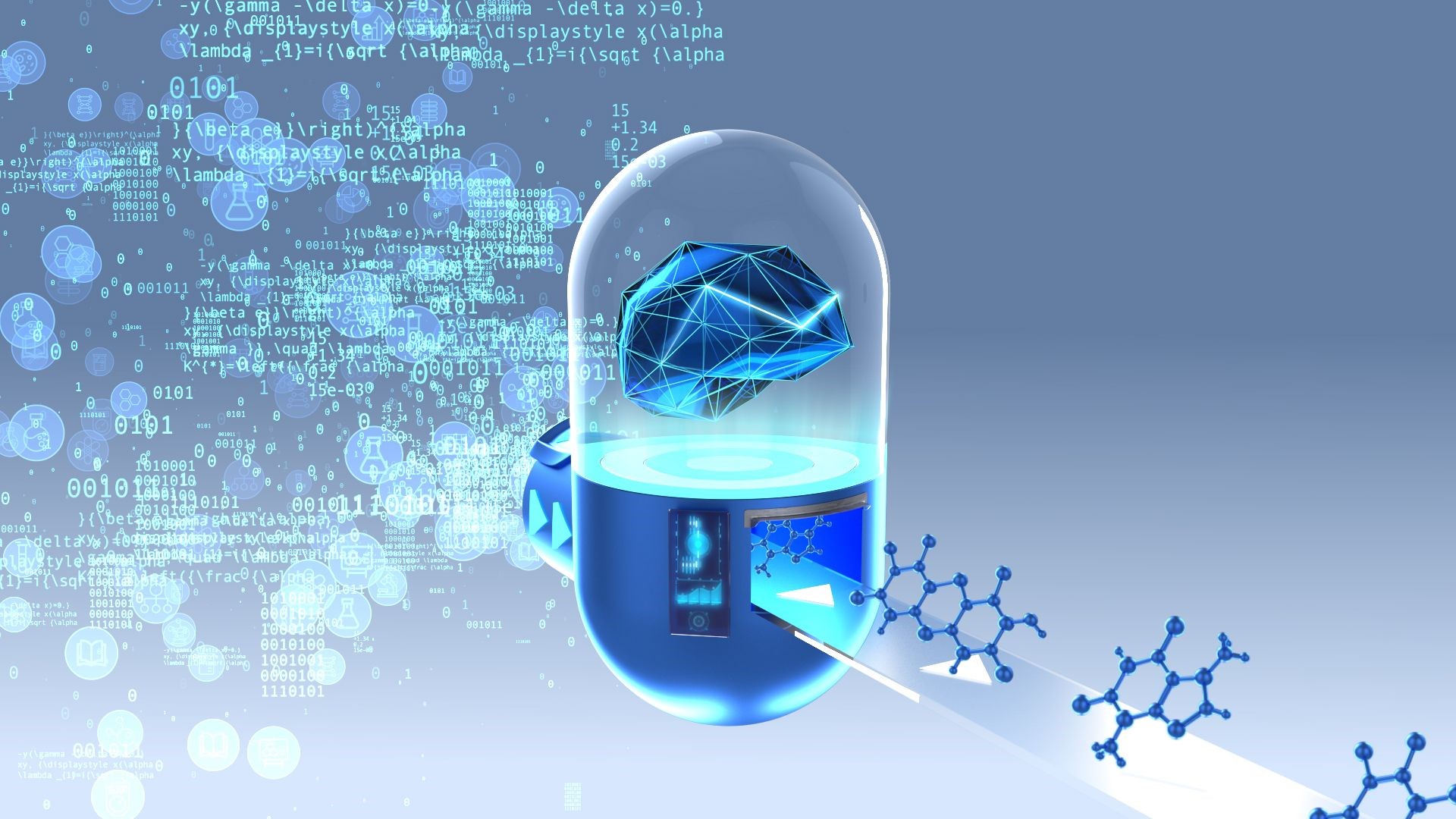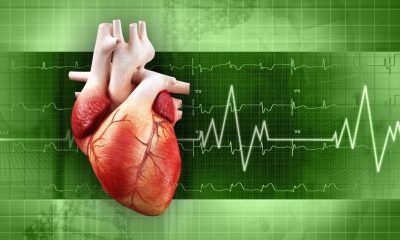health
How AI Is Enhancing Drug Discovery Processes

The field of drug discovery has always been a complex and time-consuming endeavor, laden with high costs and significant risks. Traditional methods often involve labor-intensive and time-consuming processes, from initial target identification to clinical trials. However, the advent of Artificial Intelligence (AI) is revolutionizing this landscape, offering unprecedented opportunities to streamline and enhance the drug discovery process. This article delves into how AI is transforming drug discovery, focusing on key areas where AI is making a significant impact.
The Traditional Drug Discovery Process
Before delving into the role of AI, it is essential to understand the traditional drug discovery process. Typically, this process involves several stages:
- Target Identification: Identifying the biological target, such as a protein, that plays a critical role in a disease.
- Hit Identification: Screening vast libraries of compounds to find potential “hits” that interact with the target.
- Lead Optimization: Refining these hits to improve their efficacy, selectivity, and safety.
- Preclinical Testing: Conducting laboratory and animal tests to assess the drug’s safety and efficacy.
- Clinical Trials: Testing the drug in humans to ensure its safety and effectiveness.
- Regulatory Approval: Gaining approval from regulatory bodies to market the drug.
Each of these stages is fraught with challenges, including high costs, long timelines, and a high rate of failure. Enter AI Drug Discovery.
AI in Target Identification
One of the most critical steps in drug discovery is identifying a suitable biological target. AI algorithms, particularly those based on machine learning, can analyze vast amounts of biological data to identify potential targets more quickly and accurately than traditional methods. For instance, AI can sift through genomic, proteomic, and metabolic data to pinpoint proteins or genes that may be involved in a disease. This capability not only speeds up the process but also increases the likelihood of identifying viable targets.
AI in Hit Identification
Once a target is identified, the next step is to find compounds that can interact with it. Traditional methods often involve high-throughput screening, where thousands of compounds are tested in the lab. This process is not only time-consuming but also costly. AI Drug Discovery offers a more efficient alternative.
Machine learning algorithms can predict how different compounds will interact with the target, significantly narrowing down the list of potential hits. These algorithms can analyze chemical structures and biological activities to predict which compounds are most likely to be effective. This predictive capability can reduce the need for extensive laboratory testing, saving both time and resources.

Picture by: Yandex.com
AI in Lead Optimization
After identifying potential hits, the next step is to refine these compounds to improve their efficacy and safety. AI can assist in this stage by predicting how changes to a compound’s structure will affect its performance. Machine learning models can analyze data from previous experiments to identify which modifications are likely to enhance a compound’s properties.
Moreover, AI can simulate how a compound will behave in the human body, providing insights into its pharmacokinetics and pharmacodynamics. This capability allows researchers to optimize compounds more efficiently, increasing the likelihood of developing a successful drug.
AI in Preclinical Testing
Preclinical testing involves assessing a drug’s safety and efficacy in laboratory and animal studies. AI can streamline this process by predicting potential toxicities and side effects before a compound reaches the testing stage. Machine learning models can analyze data from previous studies to identify patterns that indicate potential safety concerns. This predictive capability can help researchers focus on the most promising compounds, reducing the risk of failure in later stages.
Additionally, AI can assist in designing more effective preclinical studies. For example, machine learning algorithms can optimize study protocols, ensuring that experiments are designed to yield the most informative results. This capability can improve the efficiency and effectiveness of preclinical testing, accelerating the drug discovery process.
AI in Clinical Trials
Clinical trials are one of the most critical and costly stages of drug development. AI can enhance this process in several ways. First, machine learning algorithms can analyze patient data to identify the most suitable candidates for a trial, increasing the likelihood of success. AI can also assist in designing more effective trial protocols, optimizing factors such as dosage and treatment duration.
Moreover, AI can monitor trial data in real-time, identifying potential issues and allowing for timely interventions. This capability can improve the safety and efficacy of clinical trials, reducing the risk of adverse events and increasing the likelihood of regulatory approval.
AI in Regulatory Approval
Gaining regulatory approval is the final hurdle in the drug discovery process. AI can assist in this stage by streamlining the preparation of regulatory submissions. Machine learning algorithms can analyze data from previous submissions to identify the most critical information and ensure that it is presented in the most effective way.
Additionally, AI can assist regulatory bodies in reviewing submissions more efficiently. For example, machine learning models can analyze data from clinical trials to identify potential safety concerns, allowing regulators to focus on the most critical issues. This capability can accelerate the approval process, bringing new drugs to market more quickly.
Challenges and Future Directions
While AI Drug Discovery offers significant advantages, it is not without challenges. One of the primary concerns is the quality and reliability of the data used to train AI models. Inaccurate or incomplete data can lead to erroneous predictions, potentially jeopardizing the drug discovery process. Therefore, it is crucial to ensure that AI models are trained on high-quality, comprehensive datasets.
Another challenge is the interpretability of AI models. While machine learning algorithms can make accurate predictions, they often operate as “black boxes,” providing little insight into how they arrived at their conclusions. This lack of transparency can be a barrier to regulatory approval, as regulators need to understand the rationale behind a drug’s development.
Despite these challenges, the future of AI Drug Discovery looks promising. Advances in machine learning algorithms, coupled with the increasing availability of high-quality data, are likely to further enhance the drug discovery process. Additionally, efforts to improve the interpretability of AI models are underway, increasing their acceptance in the regulatory landscape.
Conclusion
AI is revolutionizing the drug discovery process, offering unprecedented opportunities to streamline and enhance each stage. From target identification to regulatory approval, AI Drug Discovery is transforming the way new drugs are developed, reducing costs, accelerating timelines, and increasing the likelihood of success. While challenges remain, the future of AI in drug discovery looks bright, promising to bring new, life-saving treatments to market more quickly and efficiently than ever before.
health
X-Vir tablets: Better Liver Health and Viral Suppression

Introduction
The liver plays a crucial role in maintaining the body’s overall health, performing vital functions such as detoxification, metabolism, and nutrient storage. However, chronic Hepatitis B Virus (HBV) infection can significantly impair liver function, leading to long-term complications like cirrhosis or liver cancer.
To manage this condition effectively, antiviral medications such as X-Vir tablets have become a cornerstone of treatment. Trusted by healthcare professionals worldwide, X-Vir tablets wholesaler supply ensures timely and affordable access to this essential medicine for patients battling chronic HBV infection.
Understanding Hepatitis B and Its Impact on Liver Health
Hepatitis B is a viral infection that attacks the liver and can cause both acute and chronic diseases. Chronic HBV infection occurs when the immune system fails to completely clear the virus from the body, allowing it to persist and damage liver cells over time. This ongoing infection can lead to fibrosis, cirrhosis, or even liver cancer if left untreated.
While lifestyle management and regular monitoring are important, antiviral therapy remains the most effective approach to control viral replication and reduce liver inflammation. That’s where X-Vir tablets play a vital role.
What Are X-Vir Tablets?
X-Vir tablets contain Entecavir, a potent antiviral agent that inhibits the replication of the Hepatitis B Virus in the body. Entecavir belongs to a class of drugs known as nucleoside analogues, which work by blocking the enzyme responsible for viral DNA synthesis. This action prevents the virus from multiplying, helping to lower HBV levels in the blood and reduce liver damage.
Physicians often recommend X-Vir for:
- Patients diagnosed with chronic Hepatitis B infection
- Individuals showing active viral replication and liver inflammation
- Patients with cirrhosis or previous treatment failure with other antiviral agents
By targeting the virus directly, X-Vir helps patients regain liver function, lower viral load, and prevent disease progression.
How X-Vir Tablets Work
X-Vir tablets are formulated to target two main areas: liver support and viral suppression. Here’s how they work:
- Liver Support: The ingredients in X-Vir tablets help strengthen liver cells, improve detoxification processes, and enhance the liver’s ability to metabolize nutrients and medications efficiently. Regular use may reduce liver inflammation and protect against further damage.
- Viral Suppression: X-Vir contains components that work to inhibit viral replication. By reducing viral load, the tablets help prevent the virus from spreading and damaging liver cells. This contributes to better overall liver function and reduces the risk of long-term liver diseases.
- Antioxidant Properties: Oxidative stress can harm liver cells and accelerate liver damage. X-Vir tablets often contain antioxidants that neutralize free radicals, protecting liver cells and supporting cellular repair processes.
- Immune System Support: A strong immune system is essential to fight viral infections. X-Vir helps enhance immunity, giving the body a better chance to control viral activity and maintain liver health.
Benefits of X-Vir Tablets
- Effective Viral Suppression: X-Vir is clinically proven to significantly reduce HBV DNA levels in the blood, helping patients maintain better liver function and improving long-term survival outcomes.
- Protection Against Liver Damage: By controlling viral replication, X-Vir minimizes inflammation and scarring of the liver tissue, reducing the risk of cirrhosis and liver failure.
- Improved Immune Response: Consistent therapy with X-Vir supports the immune system’s ability to fight infection, leading to improved resistance against further liver damage.
- Long-Term Stability: X-Vir’s strong antiviral effect ensures sustained suppression of HBV, providing stability and reducing the chances of relapse.
- Well-Tolerated Therapy: Most patients tolerate X-Vir well, with minimal side effects compared to other antiviral medications. This makes it an ideal choice for long-term treatment plans.
Dosage and Administration
The usual recommended dose of X-Vir is 0.5 mg to 1 mg once daily, depending on the patient’s condition and prior treatment history. It should be taken on an empty stomach, at least two hours before or after a meal, for optimal absorption.
Patients are advised not to discontinue treatment without consulting their doctor, as sudden withdrawal can lead to viral rebound and worsening of liver function. Regular monitoring of liver enzymes and viral load is essential throughout therapy.
Possible Side Effects
While X-Vir tablets are generally safe, some patients may experience mild side effects such as:
- Headache
- Fatigue
- Dizziness
- Nausea
- Sleep disturbances
In rare cases, serious effects like lactic acidosis or liver enlargement may occur. Patients should immediately seek medical advice if they experience unusual symptoms like rapid breathing, muscle pain, or yellowing of the skin.
Future of X-Vir in HBV Treatment
The future of chronic Hepatitis B treatment continues to evolve with ongoing research into combination therapies, vaccines, and potential cures. However, X-Vir tablets remain one of the most reliable and evidence-backed medications available today. Their proven effectiveness, affordability, and wide availability through X-Vir tablets wholesalers make them a cornerstone of modern liver health management.
As global access to antiviral therapy expands, X-Vir will continue to play a crucial role in reducing the global burden of HBV and improving patients’ quality of life.
Global Access and Reliable Supply
Access to life-saving medicines like X-Vir is essential for effective HBV management. Many reputable pharmaceutical suppliers ensure a steady global supply of X-Vir tablets, making it available to patients and healthcare institutions worldwide.
If you are looking for a reliable X-Vir supplier, Specialitymedz stands out as a trusted name. They specialize in providing high-quality antiviral medications, ensuring authenticity, affordability, and timely delivery for global healthcare needs.
Conclusion
X-Vir tablets represent a powerful defense against chronic Hepatitis B infection, offering patients renewed liver strength and long-term stability. With consistent use and medical supervision, X-Vir helps control the virus, protect liver function, and prevent life-threatening complications.
For reliable and high-quality access to X-Vir tablets, patients and healthcare providers can trust SpecialityMedz a leading pharmaceutical exporter and supplier dedicated to delivering safe, effective, and affordable antiviral medications worldwide. With Specialitymedz, patients can continue their journey toward healthier, stronger liver function and a better quality of life.
health
Fracture and Chest Pain Treatment in Nagarabhavi

Introduction
Medical emergencies require prompt action and expert care. Whether you’ve suffered a bone fracture or experiencing chest discomfort, having access to quality healthcare services in your area is crucial. Finding reliable fracture treatment Nagarabhavi and a trusted chest pain doctor in Nagarabhavi ensures you receive timely medical intervention when every moment counts.
Expert Fracture Treatment Services
Accidents happen unexpectedly, and when they result in broken bones, immediate professional care is essential. Quality fracture treatment Nagarabhavi includes comprehensive services from initial assessment to complete recovery. Experienced orthopedic specialists use digital X-rays to accurately diagnose the type and severity of fractures, whether simple or compound. Treatment options include casting, splinting, or surgical fixation depending on your condition. Modern fracture care focuses on proper alignment, immobilization, and structured rehabilitation to ensure bones heal correctly and you regain full functionality.
Understanding Different Types of Fractures
Fractures come in various forms, each requiring specific treatment approaches. Closed fractures occur when the bone breaks but doesn’t pierce the skin, while open fractures involve bone fragments breaking through the skin surface, requiring immediate surgical intervention to prevent infection. Hairline fractures are minor cracks in the bone that may not be immediately visible but cause significant discomfort. Comminuted fractures involve the bone breaking into multiple pieces, often requiring surgical pins or plates for proper healing. Understanding the type of fracture you have helps your doctor determine the most effective treatment plan.
The Recovery Process
Fracture healing typically occurs in stages, beginning with inflammation and clot formation at the injury site. Over the following weeks, soft callus forms around the broken bone, gradually hardening into new bone tissue. Complete healing can take anywhere from six weeks to several months depending on the fracture’s severity, location, and your overall health. During recovery, proper nutrition rich in calcium and vitamin D, adequate rest, and following medical advice are crucial for optimal healing outcomes.
Specialized Care for Chest Pain
Chest pain should never be ignored as it can indicate various conditions ranging from minor muscular issues to serious heart problems. A qualified chest pain doctor in Nagarabhavi will conduct thorough evaluation including physical examination, ECG, blood tests, and other necessary diagnostics to determine the cause. Whether your chest pain stems from cardiac issues, respiratory problems, acidity, anxiety, or muscle strain, proper diagnosis is critical for appropriate treatment. These specialists can differentiate between emergency situations requiring immediate intervention and conditions that can be managed with medication and lifestyle changes.
Common Causes of Chest Pain
While heart-related issues are the most concerning cause of chest pain, many other conditions can produce similar symptoms. Gastroesophageal reflux disease or severe acidity can cause burning chest discomfort that mimics heart problems. Anxiety and panic attacks often manifest as chest tightness accompanied by rapid heartbeat and breathing difficulties. Costochondritis, an inflammation of the cartilage connecting ribs to the breastbone, causes sharp chest pain that worsens with movement or deep breathing. Respiratory conditions like pneumonia, pleurisy, or pulmonary embolism can also cause chest discomfort along with breathing difficulties.
When to Seek Immediate Help
Certain chest pain symptoms require emergency medical attention. If you experience crushing chest pain radiating to your jaw, neck, or left arm, accompanied by sweating, nausea, or shortness of breath, seek immediate care as these could indicate a heart attack. Sudden severe chest pain with difficulty breathing might signal a pulmonary embolism or collapsed lung. Even if you’re unsure about the severity, it’s always better to get evaluated by a chest pain doctor rather than risk a potentially serious condition.
Why Local Emergency Care Matters
Having access to fracture treatment and chest pain specialists in Nagarabhavi means reduced travel time during emergencies. Quick medical attention for fractures prevents complications like improper healing, while timely evaluation of chest pain can be life-saving. Local healthcare facilities understand community needs and provide personalized care with easier follow-up appointments.
Advanced Diagnostic Facilities
Modern medical facilities in Nagarabhavi are equipped with advanced diagnostic tools that enable quick and accurate assessment. Digital X-ray machines provide instant imaging for fracture evaluation, while ECG machines help detect heart irregularities immediately. Blood test facilities can quickly check cardiac enzymes and other markers that indicate heart problems. CT scans and ultrasound equipment further aid in diagnosing complex conditions, ensuring you receive accurate diagnosis without needing to travel to distant hospitals.
Comprehensive Follow-Up Care
Both fracture recovery and chest pain management require ongoing monitoring. Quality healthcare providers ensure proper healing through regular check-ups, physiotherapy referrals for fractures, and cardiac rehabilitation or lifestyle counseling for heart-related concerns.
Preventive Measures and Lifestyle Changes
Prevention is always better than cure. For bone health, maintaining adequate calcium and vitamin D intake, regular weight-bearing exercises, and fall prevention strategies reduce fracture risk, especially in older adults. For heart health, managing stress, maintaining healthy weight, regular exercise, balanced diet low in saturated fats, avoiding smoking, and controlling conditions like diabetes and hypertension significantly reduce chest pain episodes and heart disease risk.
Don’t delay seeking medical help during emergencies. Whether you need fracture treatment Nagarabhavi or consultation with a chest pain doctor in Nagarabhavi, immediate professional care ensures better outcomes and faster recovery. Your health and safety are paramount.
health
Trusted Sexologist in Gurgaon for Couples Mantra Ayurveda

Introduction
In today’s modern world, conversations around sexual health are finally beginning to open up — yet many couples still hesitate to seek professional help when facing intimacy or performance issues. The truth is, sexual health is an essential part of overall well-being, and just like any other medical concern, it deserves expert attention and care.
If you’re looking for the best sexologist in Gurgaon, Mantra Ayurveda stands out as a trusted name in holistic sexual wellness. Combining the ancient wisdom of Ayurveda with modern diagnostic techniques, Mantra Ayurveda offers confidential, compassionate, and effective treatment for men, women, and couples struggling with sexual health challenges.
Understanding the Importance of Sexual Wellness
Sexual wellness is not just about intimacy it’s about maintaining emotional balance, confidence, and healthy relationships. Many couples experience issues such as:
- Low libido or decreased desire
- Erectile dysfunction or premature ejaculation
- Pain during intercourse
- Infertility or conception difficulties
- Relationship stress due to physical dissatisfaction
Unfortunately, stigma often prevents people from seeking timely treatment. Consulting the best sexologist in Gurgaon ensures that such issues are identified early and managed effectively with personalized care and discretion.
Why Choose Mantra Ayurveda in Gurgaon?
At Mantra Ayurveda, sexual wellness is treated as a holistic part of health — involving the mind, body, and emotions. The clinic’s specialists blend traditional Ayurvedic therapies with modern medical insights to provide sustainable results without side effects.
Here’s what makes Mantra Ayurveda the preferred choice for couples in Gurgaon:
1. Expert Ayurvedic Sexologists
The team at Mantra Ayurveda includes experienced practitioners recognized among the best sexologists in Gurgaon. Their deep understanding of Ayurvedic science allows them to treat root causes, not just symptoms, ensuring lasting improvement in sexual health.
2. Personalized Diagnosis and Treatment
No two individuals or couples are the same. The specialists conduct a thorough assessment — considering physical health, emotional state, and lifestyle — before creating a customized treatment plan.
3. Confidential and Supportive Environment
Privacy and comfort are priorities at Mantra Ayurveda. Every consultation is handled with professionalism and confidentiality, helping clients feel relaxed and respected.
4. Holistic Healing Approach
Beyond medical treatment, patients receive guidance on diet, lifestyle changes, stress management, and natural remedies to promote long-term vitality and hormonal balance.
5. Proven Ayurvedic Therapies
Treatments often include powerful Ayurvedic formulations like Ashwagandha, Shilajit, Gokshura, and Safed Musli, which enhance stamina, reproductive health, and mental clarity.
Common Conditions Treated by the Best Sexologist in Gurgaon
The sexologists at Mantra Ayurveda address a wide range of male and female sexual health concerns with proven Ayurvedic solutions:
1. For Men
- Erectile Dysfunction (ED): Treated through natural herbs and therapies that improve blood flow and energy levels.
- Premature Ejaculation (PE): Ayurvedic medicines and relaxation techniques are prescribed to increase endurance.
- Low Libido: Holistic remedies to enhance vitality and restore confidence.
- Infertility: Therapies to improve sperm quality, count, and overall reproductive health.
2. For Women
- Low Sexual Desire: Balancing hormones and addressing emotional factors through herbal tonics and stress management.
- Painful Intercourse: Gentle treatments that focus on lubrication, relaxation, and hormonal balance.
- Menstrual Irregularities: Addressed through Ayurvedic detox and herbal remedies to regulate cycles and improve fertility.
3. For Couples
Mantra Ayurveda also specializes in couple therapy, helping partners rebuild intimacy, trust, and communication. Through joint counseling sessions and tailored treatments, couples can restore both physical satisfaction and emotional connection.
The Ayurvedic Advantage in Sexual Wellness
Ayurveda views sexual health as an integral part of the body’s overall energy — the balance of Vata, Pitta, and Kapha doshas. Imbalances in these energies often lead to physical and emotional disturbances affecting sexual function.
The best sexologist in Gurgaon at Mantra Ayurveda uses time-tested Ayurvedic principles to restore this balance naturally. Therapies may include:
- Rasayana Therapy: Rejuvenation therapy to boost vitality and immunity.
- Vajikarana Therapy: Specialized Ayurvedic treatment focused on enhancing sexual performance and fertility.
- Panchkarma Detox: Deep cleansing therapies that eliminate toxins and improve hormonal balance.
- Herbal Supplements: Safe, non-addictive herbs that improve stamina, endurance, and mental well-being.
These holistic treatments help achieve long-term improvement rather than temporary relief, making Ayurveda a preferred choice for many couples today.
Benefits of Consulting the Best Sexologist in Gurgaon
Seeking help from a professional is not a sign of weakness it’s a step toward taking charge of your health and happiness. Here’s what you gain from consulting an expert like those at Mantra Ayurveda:
- Accurate diagnosis of underlying causes
- Safe and natural treatment options
- Enhanced sexual performance and confidence
- Strengthened emotional bond with your partner
- Improved overall physical and mental wellness
By addressing both the physiological and psychological aspects, Mantra Ayurveda ensures complete healing for every patient.
When to See a Sexologist
You should consider visiting the best sexologist in Gurgaon if you or your partner experience:
- Persistent performance issues or lack of desire
- Emotional disconnect or anxiety related to intimacy
- Fertility challenges
- Dependence on medications or supplements without results
- Unexplained sexual discomfort or pain
The sooner you seek help, the faster and more effectively these concerns can be managed.
Why Couples Trust Mantra Ayurveda
Over the years, Mantra Ayurveda has earned a reputation as one of Gurgaon’s most trusted centers for sexual health and Ayurvedic wellness. The clinic’s compassionate team, ethical practice, and consistent results have helped countless couples regain confidence and intimacy.
Every treatment journey here is private, personalized, and focused on building long-term wellness — not just temporary fixes.
FAQs
Q1. Is visiting a sexologist in Gurgaon confidential?
Yes, at Mantra Ayurveda, your privacy is fully protected. All consultations and treatments are conducted with strict confidentiality.
Q2. How long does it take to see results from Ayurvedic treatment?
Most patients notice positive changes within a few weeks, though complete results depend on the severity of the issue and consistency with treatment.
Q3. Are Ayurvedic sexual health treatments safe?
Absolutely. Ayurvedic remedies are natural and free from harmful chemicals or side effects when prescribed by qualified practitioners.
Q4. Can stress cause sexual problems?
Yes. Stress, anxiety, and poor lifestyle habits are major causes of sexual dysfunction. Ayurvedic therapies help reduce stress and restore balance.
Q5. Can couples undergo treatment together?
Yes. Mantra Ayurveda offers couple consultations to address shared concerns and improve relationship satisfaction holistically.
Conclusion
Sexual health plays a vital role in overall well-being and relationship happiness. At Mantra Ayurveda, the focus is on restoring balance, confidence, and harmony through time-tested Ayurvedic wisdom and compassionate care.
If you’re searching for the best sexologist in Gurgaon, trust the experts at Mantra Ayurveda — where healing goes beyond medicine to help couples rediscover intimacy, energy, and emotional connection naturally.
-
Business2 years ago
Cybersecurity Consulting Company SequelNet Provides Critical IT Support Services to Medical Billing Firm, Medical Optimum
-
Business2 years ago
Team Communication Software Transforms Operations at Finance Innovate
-
Business2 years ago
Project Management Tool Transforms Long Island Business
-
Business2 years ago
How Alleviate Poverty Utilized IPPBX’s All-in-One Solution to Transform Lives in New York City
-
health2 years ago
Breast Cancer: The Imperative Role of Mammograms in Screening and Early Detection
-
Sports2 years ago
Unstoppable Collaboration: D.C.’s Citi Open and Silicon Valley Classic Unite to Propel Women’s Tennis to New Heights
-
Art /Entertainment3 years ago
Embracing Renewal: Sizdabedar Celebrations Unite Iranians in New York’s Eisenhower Park
-
Finance3 years ago
The Benefits of Starting a Side Hustle for Financial Freedom










































